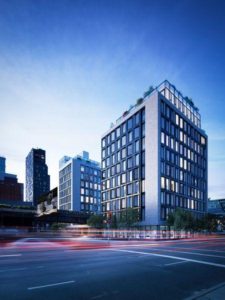Every commercial or multi-residence building that you enter employs some type of fire protection system. In most situations, the type used is either a wet-pipe system or a dry-pipe system. The interesting thing is that contrary to their names, both types of systems use water for fire suppression.
So, what is the difference between wet and dry sprinkler systems?
Understanding their differences is important for knowing which system is best for your building.
How Wet-Pipe Sprinkler Systems Work
A wet-pipe sprinkler system is one in which the overhead pipes that the sprinkler heads are connected to are always filled with pressurized water via a street-level connection. Thus, when a fire breaks out and the heat causes the temperature sensitive glass bulb in the sprinkler to break, water immediately sprays from the activated sprinkler head to extinguish the flames.
This type of sprinkler system is not only the most common one used today, but also the easiest and most affordable to install and maintain. Wet-pipe systems are simple and straightforward in how they operate and are proven reliable. And because pressurized water is always inside the pipes, the water is immediately available whenever it is needed.
While wet-pipe systems might be the most common used, there are some spaces where one might want to avoid using it. Such a space can include any part of the building that might be prone to reaching temperatures of 40° F or below. In such a cold environment, there is always the risk that the water contained in the pipes will freeze, rendering the system useless in the event of a fire.
How Dry-Pipe Sprinkler Systems Work
A dry-pipe sprinkler system works a lot like a wet-pipe system in that it also uses water to extinguish the fire, but with one major difference – instead of pressurized water being contained in the pipes, they are filled with pressurized air or nitrogen.
In a dry-pipe system, a closed valve separates the main piping from the water supply. When a fire breaks out, the heat activates the sprinkler head, and this causes the air pressure inside the pipe to drop. The drop in pressure then causes the valve to open and water flows into the system and out of activated sprinkler head to extinguish the fire. Because the pressure needs to drop to a certain level, there is usually up to a 60-second delay from when the sprinklers are activated to when water reaches them.
Since this type of system does not contain water until it is activated, it is most commonly used in structures or parts of buildings where no source of heat is employed. Examples of such areas include parking garages, loading docks, and walk-in refrigerators.
This system requires a constant and reliable supply of pressurized air as well as special components, so it can be significantly more complex and expensive to install and maintain compared to a wet-pipe system. It also has far more design restrictions.
Interested in a Dry- or Wet-Pipe Fire Suppression System? Contact Metro Fire Inspections Today!
Metro Fire Inspections is a full-service fire protection services company serving metro New York City. We offer fire system consultations, design, installation, inspection maintenance, and violation remediation.
If you want a new wet- or dry-pipe fire suppression system installed in your building, or you need your current system inspected and/or maintained, contact Metro Fire Inspections today at 631-994-0081 or click here to obtain a free quote for service.





